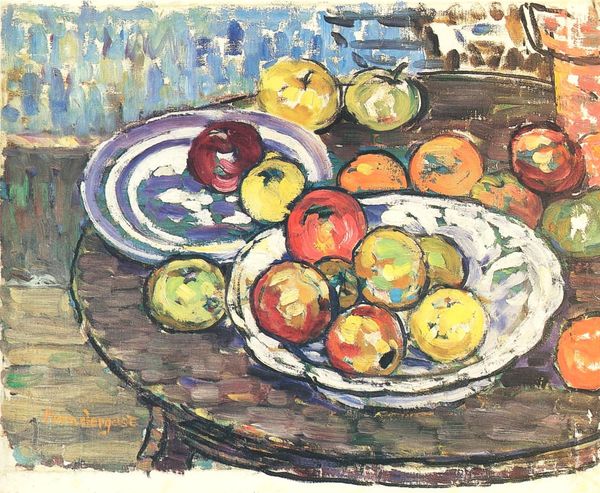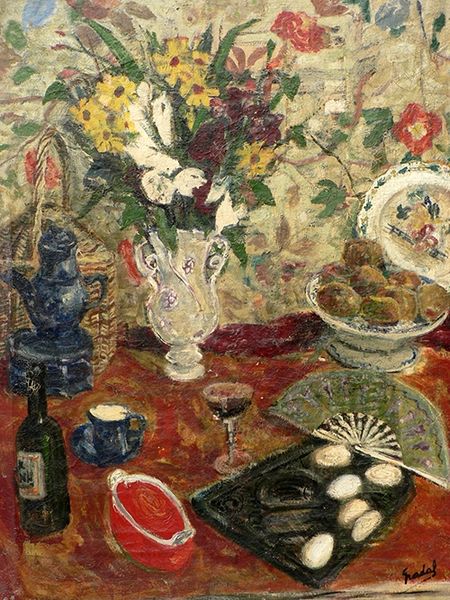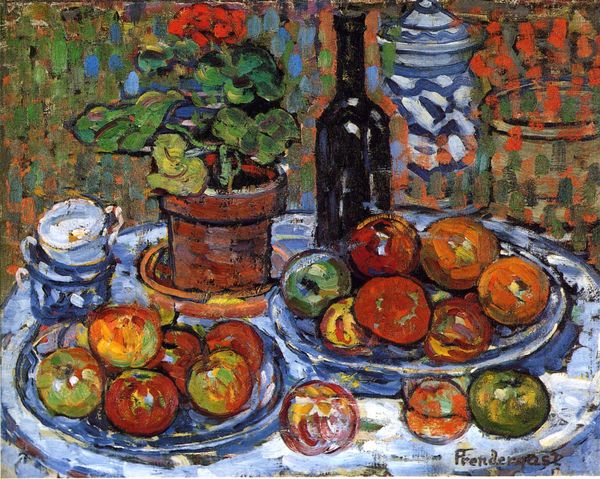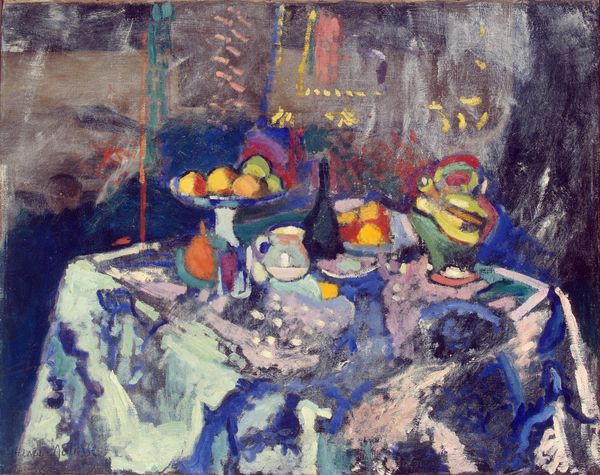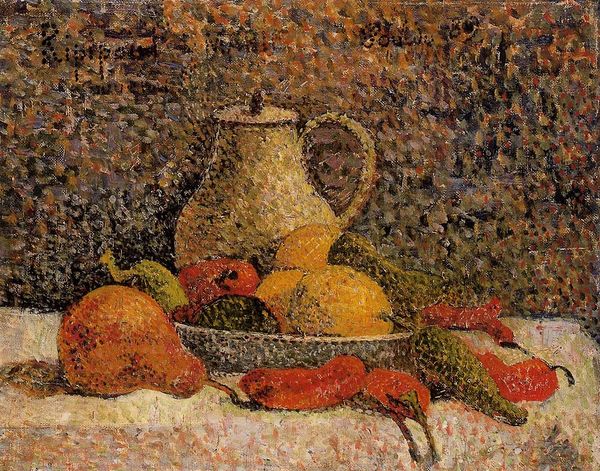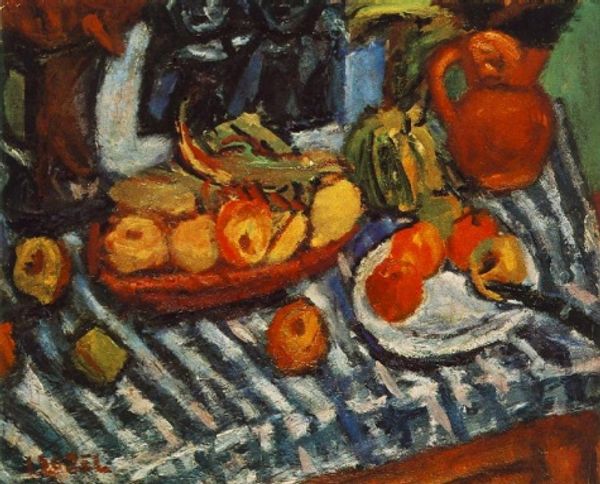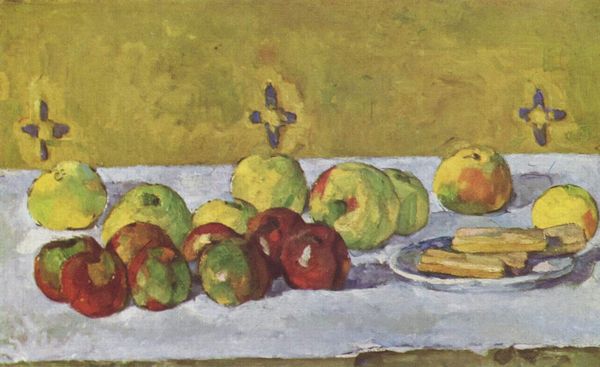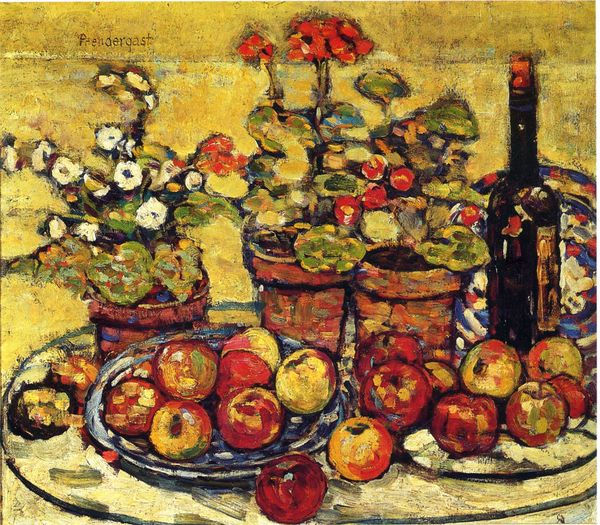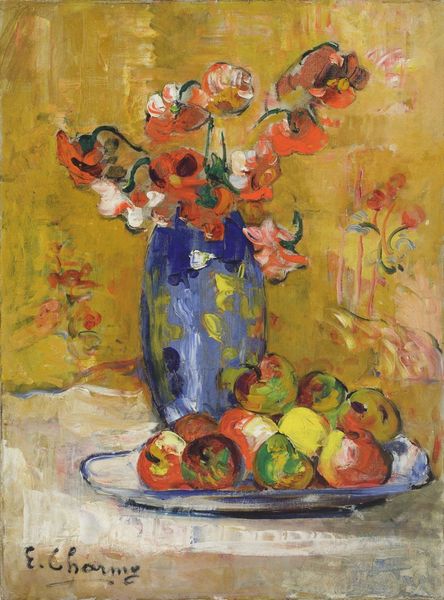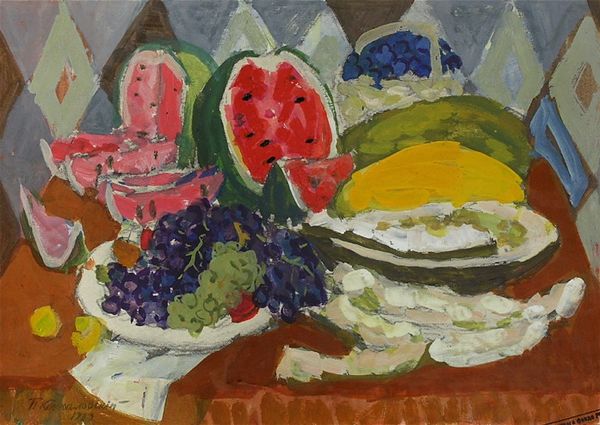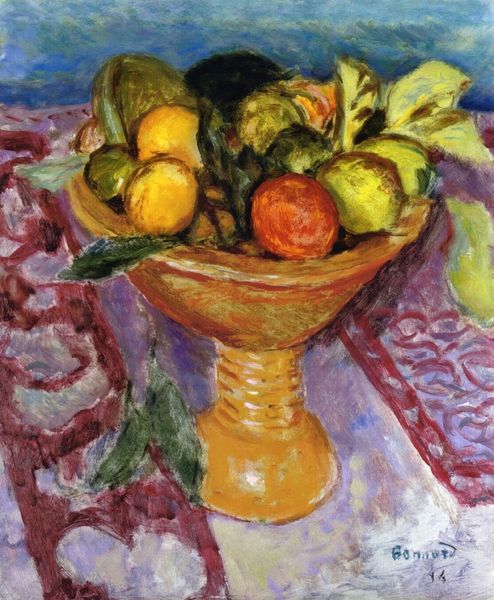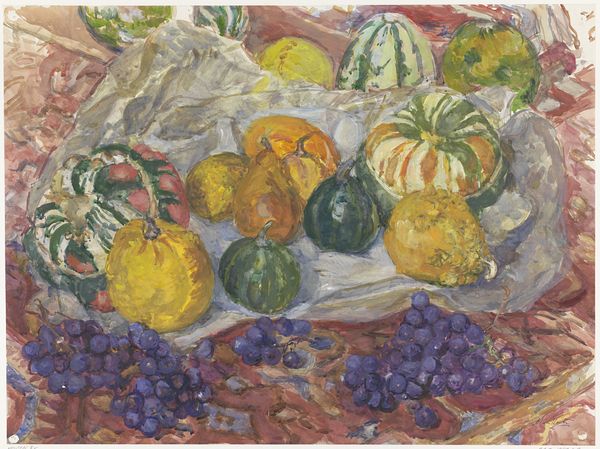
Copyright: Public domain
Editor: Wow, what a delightfully chunky still life. I feel like I could just reach out and grab one of those apples! It’s got a wonderful warmth and domesticity, like stumbling upon a secret feast in grandma's kitchen. Curator: Indeed. What you're describing is very much in line with the ethos of Post-Impressionism. We’re looking at Maurice Prendergast's "Still Life With Apples," an oil on canvas he completed around 1915. The period was deeply informed by socio-political turmoil linked to industrial labor, and artists like Prendergast offered a vital sense of solace by turning toward the intimate, personal, and sensory details of the domestic space. Editor: Solace, definitely. And texture, so much luscious texture! Look at how he renders the apples—swirls of yellow, green, red...almost as if he's conveying the *idea* of apples, the Platonic ideal, more than photorealistic apples. Know what I mean? Curator: I think I do, yes. His layering of pigment definitely leans more toward capturing an essence, or feeling. Remember that Impressionism challenged the established Salon system by emphasizing lived, contemporary experience as subjective truth. Editor: Right. Which makes the “still life” thing so subversive. It’s not still at all. I feel like this tabletop is humming with quiet energy, each apple holding a secret story. It's all the more intense because of Prendergast’s perspective. We're brought right up to the table, as if we're partaking in this simple meal! And the bold strokes give this such a confident attitude, don’t you think? Curator: Absolutely. And there's also that fascinating tension between the objects in the foreground and the amorphous backdrop. The blurring between domesticity and landscape, particularly when we think of landscape as deeply encoded with constructions of class, gender, and access, reveals subtle social commentary. The everyday, the mundane, gains radical agency. Editor: Gosh, it's just such a joyous, almost reckless application of color and form! Even the slightly clumsy lines only add to its charm, creating a vibrant celebration of life’s simpler joys. You've given me a lot to think about; especially regarding the use of "background blurring" as social critique, but for now I simply want to taste one of these apples. Curator: I share the feeling entirely. These objects aren’t simply representations; they are imbued with the energy of lived experiences, prompting a quiet moment of both personal and socio-political reflection.
Comments
No comments
Be the first to comment and join the conversation on the ultimate creative platform.
